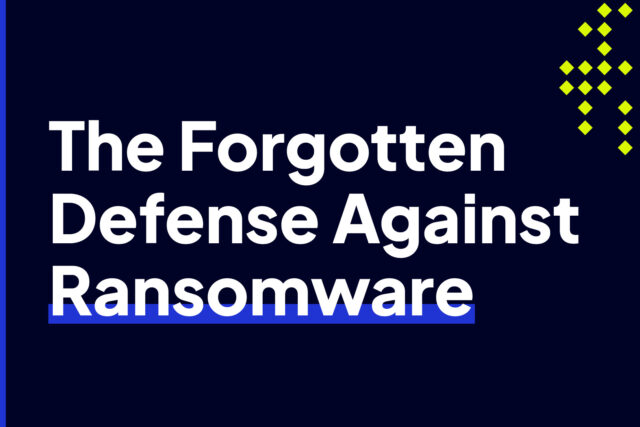
How to Retain Quality Cybersecurity Talent
As the demand for talented cybersecurity professionals continues to outpace the supply, you should be concerned about the prospect of losing quality talent. In line with the global cybersecurity talent shortage, it’s projected that by the year 2025 there will be 3.5 million unfilled cybersecurity jobs worldwide. This forecast underscores the urgency for organizations to not only attract, but also retain top cybersecurity talent.
Retaining quality cybersecurity talent is critical
Retaining quality cybersecurity talent is not simply a matter of filling a position. It’s more about preserving your organization’s security posture. In a corporate environment increasingly reliant on digital operations, cybersecurity experts serve as the vanguards of your security initiatives. They play a big role in ensuring the security and integrity of your critical data, maintaining business continuity, and protecting your company’s reputation.
Losing a skilled cybersecurity professional can have serious implications. The void left by that person’s departure could lead to gaps in your organization’s overall security infrastructure, making it vulnerable to cyber attacks. The process of hiring a new expert can be time-consuming. Worse, during this period, your organization may undergo heightened risk.
The costs associated with recruiting, onboarding, and training new cybersecurity personnel can be substantial. It can take months, if not years, for your new hire—if you’re lucky to hire one at all—to fully adapt to your organization’s unique systems and processes. Attrition in your cybersecurity department can also have a negative impact on your team’s morale and productivity.
Another reason why it’s crucial to retain quality cybersecurity talent is the increasing complexity and sophistication of cyber threats. Organizations need experienced and knowledgeable professionals who can keep up with the evolving threat landscape and implement effective security strategies. Again, it’s hard to find cybersecurity folks with those levels of expertise these days.
Growing complexity of cyber threats
The cybersecurity landscape is becoming more challenging with the growing sophistication of cyber threats. One alarming issue is the possible rise of AI-generated malware. As discussed in our blog post about ChatGPT-generated malware, threat actors may leverage ChatGPT to autonomously generate malicious code. This may pose a significant challenge to traditional cybersecurity defenses.
The growing complexity of cyber threats isn’t confined to AI-generated malware though. Cybercriminals are resorting to more advanced techniques in ransomware attacks, zero-day exploits, and Advanced Persistent Threats (APTs). These sophisticated methods often involve multi-stage attack vectors, highly evasive techniques, and actions aimed at frustrating efforts to mitigate their impact.
Ransomware attacks, for instance, have evolved beyond simple file encryption. Modern ransomware not only encrypts an organization’s data but also exfiltrates it, threatening public disclosure unless ransom is paid. This double-extortion tactic compounds the potency of the attack and increases the chance of reputational damage.
Zero-day exploits take advantage of unknown vulnerabilities in software, giving cybercriminals a window of opportunity before vendors can develop and distribute patches. These attacks can circumvent traditional security measures, highlighting the need for continuous monitoring and proactive threat hunting.
Similarly, APTs involve long-term targeted attacks where the attacker remains undetected within the network for extended periods. This method may result in more extensive data breaches and intellectual property theft. This further demonstrates the severe consequences of failing to retain experienced cybersecurity personnel capable of identifying or hunting down such threats.
In light of the growing complexity and sophistication of cyber threats, it’s clear that organizations need to prioritize the retention of skilled cybersecurity talent. These professionals are crucial in navigating the challenging cybersecurity landscape and protecting the organization’s digital assets against increasingly cunning adversaries.
Here’s why you could lose cybersecurity talent
Knowing what you know now, I’m sure you realize how valuable your cybersecurity experts are. You must therefore strive to understand why quality cybersecurity personnel may be departing and what you can do to prevent it. There could be several reasons why an expert may choose to leave your organization. Here are some of them:
- Lack of Career Advancement Opportunities: High-performing cybersecurity professionals are ambitious. If they don’t see opportunities for progression in their current position, they may choose to seek those opportunities elsewhere.
- Inadequate Compensation: Cybersecurity skills are in high demand and the talent shortage has driven up salaries. If employees believe they are not being adequately compensated, they could be tempted to leave.
- Inadequate Training and Development: Cybersecurity is a rapidly changing field that requires continuous learning. If an organization fails to invest in ongoing training and professional development, its cybersecurity staff may transfer to one that’s willing to make that investment.
- Unsupportive Work Environment: A supportive work environment is critical to retention. If the workplace culture doesn’t value and support the cybersecurity function, professionals may be more likely to leave.
- Overwork and Burnout: Cybersecurity work can often involve long, irregular hours and high levels of stress. Without adequate measures to manage workload and prevent burnout, cybersecurity staff can become unhappy and seek better working conditions.
Tips for retaining cybersecurity talent
To retain your cybersecurity experts, your organization has to address the potential reasons for talent loss. At the same time, you need to cultivate an environment that facilitates professional growth and employee satisfaction. Here are the things you can do in that regard.
- Promote Career Advancement: Establish clear and transparent career paths that pave the way for potential advancements. Give employees opportunities to take on new challenges and responsibilities that build their skills and experience.
- Offer Competitive Compensation: Regularly review your compensation packages to ensure they are competitive with industry standards. Bear in mind though, many employees don’t view compensation to purely consist of salary. Some employees also factor in benefits, perks, and, for the younger generations, flexibility, into their criteria for job satisfaction.
- Invest in Training and Development: Provide regular training and development opportunities that allow your cybersecurity professionals to stay in pace with their rapidly evolving field. This not only equips them with the latest skills but also shows your willingness to invest in their growth.
- Create a Supportive Work Environment: Cultivate a work environment where management—especially senior leadership—values and respects the work that cybersecurity professionals do. Make sure the voices of your cybersecurity experts are heard in your boardrooms and their contributions are recognized.
- Manage Workload and Prevent Burnout: Implement measures to monitor and manage workload. Ensure that employees aren’t overworked. Provide resources and tools that can minimize stress and prevent burnout. We’ll introduce you to one of them below.
By focusing on these areas, your organization can increase the likelihood of retaining cybersecurity talent.
How Applied Threat Intelligence can help retain your people
Applied Threat Intelligence (ATI) is a key Intrusion capability that allows it to continuously monitor, analyze, and defend networks from cyber threats. This capability helps organizations retain top cybersecurity talent. It does so by streamlining workloads and empowering cybersecurity experts to focus on strategic security endeavors.
By leveraging artificial intelligence (AI) and machine learning (ML) as well as historical, reputation, and behavioral data, Intrusion’s ATI identifies and neutralizes threats in real-time, thereby eliminating the need for manual intervention.
In the context of cybersecurity, one of the biggest sources of burnout is the constant pressure to tackle an overwhelming volume of potential threats. Traditional cybersecurity methods often involve routine, mundane tasks, like analyzing logs and alerts. These tasks can be both time-consuming and mentally draining.
This is where ATI comes in. By automating threat detection and response, it significantly reduces the workload of security professionals. They no longer have to spend long hours sifting through logs or performing repetitive tasks. This can reduce burnout and increase job satisfaction.
Moreover, by eliminating routine tasks, ATI allows cybersecurity professionals to focus on strategic, high-level tasks that require their unique skills and expertise. They can devote more time to proactive activities, like threat hunting, improving security architecture, or developing strategies to bolster the company’s overall security posture. This not only makes their work more fulfilling but also allows them to continuously learn and grow in their roles.
Final words
Applied Threat Intelligence is an invaluable tool for organizations looking to retain their cybersecurity talent. By streamlining the workload and allowing professionals to focus on more meaningful activities, ATI can help improve job satisfaction and prevent burnout. This in turn helps companies attract and retain the best cybersecurity talent needed to effectively protect their digital assets against increasingly sophisticated cyber threats.

